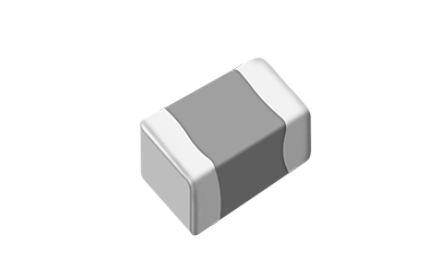Understanding High-Voltage MultiLayer Ceramic Capacitors
In modern electronic devices, Multilayer Ceramic Capacitors (MLCCs) have become crucial components. They play significant roles in various applications, including power management, signal processing, and noise filtering. This article provides a detailed overview of high-voltage multilayer Ceramic Capacitors, covering their basic concepts, applications, and importance in electronic design.
Definition of High-Voltage Multi-Layer Ceramic Capacitors
High-Voltage multilayer Ceramic Capacitors (HV MLCCs) are designed to withstand high-voltage conditions. Compared to standard MLCCs, HV MLCCs can operate reliably at higher voltages, offering lower leakage currents and higher insulation resistance. They consist of multiple layers of ceramic dielectric and electrodes, manufactured through a stacking process.
Working Principle of High-Voltage Multi-Layer Ceramic Capacitors
The working principle of HV MLCCs is based on the fundamental operation of capacitors, which store and release charge. The ceramic dielectric inside has a high dielectric constant, allowing the capacitor to maintain a good capacitance value even under high voltage conditions. Increasing the number of ceramic layers enhances the overall capacitance and voltage endurance of the capacitor, enabling HV MLCCs to perform reliably at higher voltages.
Applications of High-Voltage Multi-Layer Ceramic Capacitors
HV MLCCs are widely used in various high-voltage electronic devices, such as:
- Power Electronics: In power converters, inverters, and other equipment, HV MLCCs ensure stable operation at high voltages.
- Communication Equipment: In communication base stations and related devices, HV MLCCs are used for filtering and noise reduction to ensure signal stability and clarity.
- Automotive Electronics: In automotive power systems and control modules, HV MLCCs handle potential high-voltage situations within vehicles.

(Q series from YMIN)

Additionally, the YMIN NP0 Material High-Voltage Ceramic Capacitor Q Series is a notable example of HV MLCCs. Its core advantages include ultra-low Equivalent Series Resistance (ESR), excellent temperature characteristics, and features such as miniaturization and lightweight design. Specifically, these capacitors are intended to replace traditional film capacitors used in magnetic resonance wireless charging systems for electric vehicle (EV) batteries. This application not only enhances the performance of the charging system but also optimizes the overall design, meeting the stringent requirements for high-performance electronic components in electric vehicles.
Advantages of High-Voltage Multi-Layer Ceramic Capacitors
HV MLCCs offer several significant advantages:
- High Voltage Endurance: They operate reliably in high-voltage environments, avoiding breakdown due to excessive voltage.
- Miniaturized Design: Thanks to the high dielectric constant of the ceramic dielectric, HV MLCCs achieve high capacitance values in a compact size.
- Excellent Stability: With low leakage currents and high insulation resistance, HV MLCCs ensure long-term reliability.
Future Trends in High-Voltage Multi-Layer Ceramic Capacitors
As electronic devices demand higher performance and reliability, the technology of HV MLCCs is continually advancing. Future research directions include improving the voltage endurance of capacitors, reducing their size, and enhancing their temperature stability. These advancements will further improve the performance of HV MLCCs in various applications, meeting the growing demands of electronic design.
Conclusion
High-voltage Multi-Layer Ceramic Capacitors play a vital role in modern electronic devices. Their unique high-voltage endurance and miniaturized design make them ideal for addressing high-voltage challenges. Understanding their principles and applications is crucial for designing and selecting appropriate electronic components. With ongoing technological advancements, such as the YMIN‘s High-Voltage Ceramic Capacitor Q Series in NP0 Material, the performance of HV MLCCs will continue to improve, providing greater reliability and performance for electronic devices.
Related Article:YMIN Q Series MLCC: Emerging from the Cocoon, Ushering in a New Era of High-Power Wireless Charging, Ideal for Precision Circuit Design
Post time: Sep-19-2024